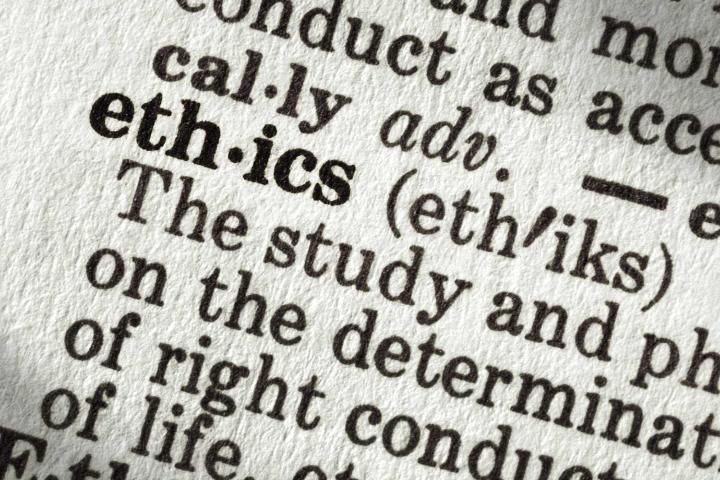Introduction
A coalition is a group of organizations and individuals working together for a common purpose. In effective coalitions, organizations share talents and resources to address complex issues that frequently occur in human services, education, and other non-profit areas.
Coalitions may be formed to address a single issue or event—or they may be ongoing to address long-term and/or complex issues. A coalition is usually formed when individual organizations recognize that each does not have the people power, technical capacity, or other resources to have a substantial impact on a given issue.
The most successful and productive coalitions function under a formal structure with agreement on goals, timelines, and operating procedures.1 Coalition members discuss and reach agreement on member roles and responsibilities, often writing job descriptions to clarify what members are committing to for themselves and their agencies. Additionally, open communication is needed to prevent and solve problems. For example, by working together to establish formal agreements, coalitions demonstrate an understanding of open communication.

Credit: Comstock
Coalitions and Ethical Dilemmas
However, even with formalized agreements, issues arise that force coalition members to make difficult decisions. Often these are ethical issues, which may involve conflicting personal or institutional values—none of these conflicting choices are wrong, and all are essentially right.
Consider this example:
The Coalition for Stronger Families is choosing a new board member. Current members agree that it is important for the board membership to reflect the diversity of the community.
Two individuals have applied for the position on the board. One, a Haitian woman, has volunteered many hours for the coalition. The second applicant is a well-respected banker who has been very successful in garnering donations for other organizations where he is a board member. Money for the coalition is very tight, and without significant donations, they will have to reduce services to families.2
-
How does the group decide?
-
What ethical principles must the group consider?
-
What process can the group use to resolve an ethical dilemma when forced to choose between two right options?
Values and Ethics
Ethics refers to standards of conduct that indicate how people ought to behave, based on values and principles about what is right. Ethics deals with the ability to distinguish right from wrong and the commitment to do what is right.
Values and ethics are not the same. Ethics is concerned with how a person should behave, in contrast to values, which concern the beliefs and attitudes that determine how a person actually behaves. Values can be defined as those things that are important or valued by someone such as integrity, professionalism, caring, teamwork, and stewardship.
Individuals and organizations hold both ethical and non-ethical values. Ethical values are values relating directly to beliefs about what is right and proper. Ethical conduct generates a climate of trust that in turn promotes success of the coalition.3

Credit: iStockphoto
Ethical Dilemmas: Choosing between Two "Rights"
An ethical dilemma occurs when there is a conflict between core ethical values, between two decisions that are both "right." In these cases, there is no one clear-cut ethical choice.
"Turfism," or the desire to protect one's organization or "self," may first appear to be an ethical conflict. Clearly evaluate the conflict to determine if it is a true ethical conflict, or if it is a case of turfism. Disagreements over the selection of projects for funding or choosing members to serve on a board of directors may reflect turfism rather than an underlying ethical dilemma. Using the 10-Step Decision-Making Model described in this publication can help coalitions identify the actual issues.
Resolving Ethical Dilemmas
Resolving ethical dilemmas often requires a structured procedure to ensure that all participants have an opportunity to provide input. Using a structured procedure puts a public face on the decision-making process as the dilemma is resolved in open, guided discussions. Ideally, coalition participants who practice this process before they are faced with an actual right-vs.-right dilemma will be better prepared to calmly and fairly address emotionally charged issues.
The Six Pillars of Character4
Various models exist for guiding ethical leadership and decision-making. The Josephson Institute's Six Pillars of Character provides a guiding framework, which is especially helpful in developing and maintaining coalitions.4 Ethical questions are easier to address when coalition members understand what factors (i.e., personal vs. organizational benefit, long-term vs. short-term timeframes, loyalty to one's own group) impact one another's decision-making.1 The Six Pillars of Character are identified below along with characteristics of each.

Credit: Medioimages
Six Pillars of Character4
-
Respect: Civility, Courtesy, Decency, Dignity, Autonomy, Tolerance, Acceptance
-
Responsibility: Accountability, Pursuit of excellence, Self-restraint
-
Trustworthiness: Honesty, Truthfulness, Sincerity, Candor
-
Caring: Appreciation of others, Self after others, Love for people and humanity
-
Fairness: Process, Impartiality, Equity
-
Citizenship: Community membership, Do more than your fair share, Community ownership
10-Step Decision-Making Model
This 10-step model helps to clarify the needs and values of the coalition as they struggle with a case study.4 Using case studies (Appendix A and B) helps individual participants enhance their skills in identifying and resolving common ethical dilemmas.
-
What is the problem or goal?
-
Who are the stakeholders?
-
What are the options or choices?
-
What are the potential consequences of each option?
-
Is there a right vs. wrong situation to address?
-
Is there an ethical dilemma (right vs. right) to resolve?
-
If yes, what is it? Which values or principles are involved?
-
How will you rank them?
-
What will you decide?
-
Why?
The following section describes a workshop designed to guide coalitions through the decision-making process. This activity requires active participation by all members. To begin, identify small groups and choose someone to lead the discussion and someone to keep notes on a flip chart or board so everyone can follow the steps together.

Credit: Hemera
Choosing Right or Right?
Directions for a Small Group Activity3
Before the Meeting
-
Print sufficient copies of the case studies (Appendix A and B) so each participant will have a copy of one case study.
-
Print a copy of the 10-Step Decision-Making Model (Appendix C) for each participant.
-
Print and cut out one set of The Six Pillars of Character Cards (Appendix D) for each participant. Cardstock works best.
-
Arrange for a flip chart and pens or a writing board and markers for each group.
-
Be sure the room arrangement allows for small circles of chairs for discussion.
At the Meeting
-
Begin with introductions. Use a get-acquainted activity to help people begin thinking about ethical issues. One option is to have them describe the most ethical person they know.
-
Reflecting on the first sections of this article, offer a brief explanation of the issue: Choosing between right and right.
-
Arrange people in groups of 5 or 6. Encourage participants to join groups with people they don't know to facilitate cross-organizational communication. Remind each group to select a leader, recorder and reporter.
-
Distribute the materials (Appendix C and D) to each participant.
-
Assign each group a case study for discussion (Appendix A and B).
Lead the activity as follows
-
Ask participants to read the case study and choose "roles."
-
Have participants arrange their Six Pillars of Character Cards in order of personal priority.
-
Instruct participants to proceed through the 10-Step Decision-Making Model process. This will involve considerable discussion and negotiation within the group.
-
Have participants re-evaluate their Six Pillars of Character Cards based on compromises they made in the discussion. How did personal and group values differ? What was given up?
-
Allow 20–30 minutes for the group to complete the 10-Step Decision-Making Model. Call the group back together for sharing.
-
Ask each group to give a report. Ask about the differences between personal and group core values. Summarize the discussion and lead the group to contemplate how this exercise may help them as they face real issues in the future.
References
1Wilken, C., Tremethick, M., Walker, K., & Meier, P. (1999). Community coalitions: Foundations for success in health promotion for older adults. Journal of Family and Consumer Sciences, 91(4), 83-87.
2Walker, K., Phillips, M., & Kahl, D. Leads curriculum notebook. Retrieved August 13, 2012 from http://www.ksre.ksu.edu/library/misc2/s137.pdf
3Wilken, C. & Walker, K. (2003). Ethical issues in building and maintaining coalitions. Choosing between right and right. [Abstract]. Proceedings of 2003 Annual Leadership Diversity in the New Millennium. Orlando, FL.
4Josephson Institute on Ethics. Retrieved July 2012 from http://www.josephsoninstitute.org/
Appendix A
Ethical Case Study #1
Chris is the leader of a neighborhood group of young teenagers. Several youth want to attend summer camp but do not have enough money. One parent, Gene, has led the group fundraising but has not been very successful. Another parent, Kelly, calls and is excited to tell you (Chris) that a local business has agreed to sponsor the costs of five kids. They want the kids to come to the business for a day so they can get to know them. Because they make pizza, you know that the kids will be excited about visiting the business and about being sponsored by this company. You remember that the business was recently fined for hiring kids too young for employment.
Is there an ethical dilemma? If so, what is it?
Should the money and the sponsorship be accepted? Why?
Characters
Chris, leader of the group
Gene, parent and fund-raising leader
Kelly, parent
Suzie, youth teenager
Tom, youth teenager
Adapted by Dr. Katey Walker from materials developed by the Family Community Leadership program "Enhancing Ethical Leadership," initially developed by Donna Rae Sheffert and Marge Hamersley, University of Minnesota, and Katey Walker at a workshop held by the Josephson Institute, Marina Del Rey, CA, 1993.
Appendix B
Ethical Case Study #2
The board of directors of Leadership Training for Our Town needs to select a new board member. They have two applications—one from a single Latina woman who has volunteered extensively for the organization and one from a white male who has a track record of being the best fund-raiser in town. The board is predominantly white male and has no representation from any minority population groups in town. They have struggled with fund-raising and would like to get on firmer footing. Because of their bylaws they cannot add a new seat to the board until their annual meeting, which is almost a year away, meaning they can only fill one seat at this time.
Is there an ethical dilemma? If so, what is it?
Who should be chosen? Why?
Characters
Robert, white male businessman and board chair
Jennifer, a female physician and board member
Eugene, an elderly minister and 20-year board member
Adapted by Dr. Katey Walker from materials developed by the Family Community Leadership program "Enhancing Ethical Leadership," initially developed by Donna Rae Sheffert and Marge Hamersley, University of Minnesota, and Katey Walker at a workshop held by the Josephson Institute, Marina Del Rey, CA, 1993.
Appendix C
10-Step Decision-Making Model
-
What is the problem or goal?
-
Who are the stakeholders?
-
What are the options/choices?
-
What are the potential consequences of each action?
-
Is there a right vs. wrong situation to address?
-
If yes, what is it? Which values or principles are involved?
-
Is there an ethical dilemma (right vs. right) to resolve?
-
How will you rank them?
-
What will you decide?
-
Why?
Adapted by Dr. Katey Walker from materials developed by the Family Community Leadership program "Enhancing Ethical Leadership," initially developed by Donna Rae Sheffert and Marge Hamersley, University of Minnesota, and Katey Walker at a workshop held by the Josephson Institute, Marina Del Rey, CA, 1993.
Appendix D
Please see page 8 of the pdf version of this publication for a printable version of The Josephson Institute's Six Pillars of Character cards.